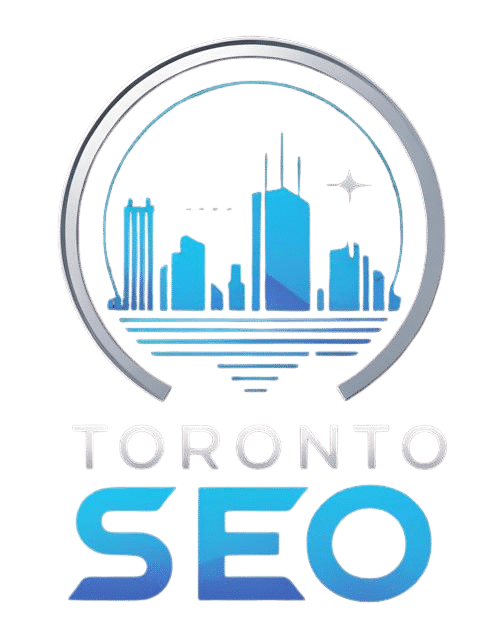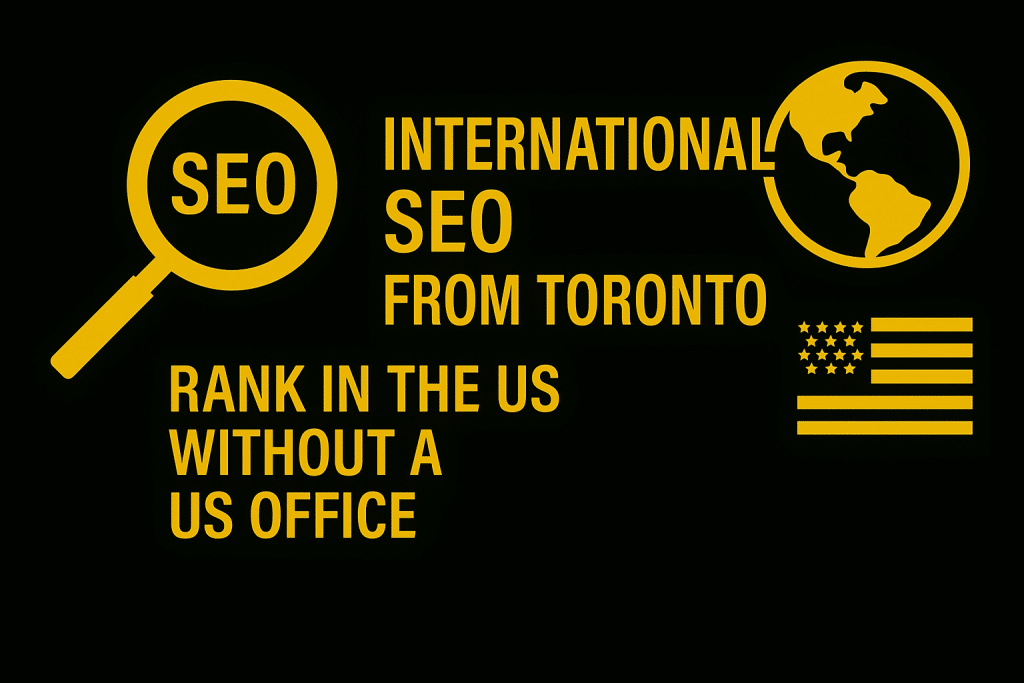Expanding your business into the U.S. market without physically opening an office south of the border is no longer a distant dream — it’s a strategic reality. With the right International SEO strategy, Toronto-based businesses can dominate U.S. search rankings, capture high-value leads, and build a credible digital footprint, all without crossing geographical lines.
Below is a comprehensive playbook designed to help Canadian brands rank in the U.S., leveraging advanced SEO tactics, geo-targeting signals, structured content, and authority-building strategies.
Understanding the U.S. Search Landscape from Canada
The U.S. SEO environment is larger, more competitive, and algorithmically nuanced compared to Canada. While Google’s core ranking systems remain the same, local signals, user intent, content localization, and E-E-A-T (Experience, Expertise, Authoritativeness, Trustworthiness) weigh heavily when competing for U.S. SERPs.
For Toronto companies, understanding these differences is crucial before executing a cross-border SEO plan. Local businesses often focus on Google Maps and “near me” searches. U.S. users, however, expect localized relevance, pricing in USD, shipping details, and content that reflects their state-level or city-level context.
A smart strategy starts with identifying your target states or metro areas, understanding their search volumes, and adapting your content architecture to reflect that.
Geo-Targeting Without Physical U.S. Presence
1. Set Geographic Targeting in Google Search Console
Even if your business operates from Toronto, you can configure Google Search Console to target U.S. audiences. This involves:
Selecting “United States” as your target country in International Targeting.
Hosting on a
.comdomain or creating a dedicated U.S. subfolder like/us/to send strong geo signals.Ensuring U.S.-specific schema and hreflang tags are implemented correctly.
2. Use U.S. Structured Data and Pricing
Your service or product pages should display:
USD currency and shipping details for U.S. visitors.
U.S. address references if applicable (e.g., warehousing, distribution partners, or virtual offices).
Schema markup reflecting organization, product, or service location details.
Google relies on structured data to understand relevance. Even without a physical office, proper markup can mimic the signals of a local U.S. business.
Content Localization: Speaking to U.S. Searchers
Create State-Specific Landing Pages
One of the most effective strategies for Toronto agencies and businesses is creating U.S. state or metro-specific pages. For example, if you’re offering SEO services or SaaS to clients in New York and California, create content like:
yourdomain.com/us/new-york/seo-services/yourdomain.com/us/california/seo-agency/
These pages should include:
State-specific statistics
Localized examples and testimonials
Internal links to relevant Canadian service pages, building authority flow.
This tactic mirrors the successful multi-location SEO strategies used for Canadian cities but applied cross-border.

👉 To better understand structuring these pages, refer to Multi-Location SEO in the GTA which outlines a framework that applies perfectly to U.S. targeting too.
Backlink Building with U.S. Authority Sources
A major ranking factor in competitive U.S. niches is link authority from U.S.-based domains. You don’t need a physical office to acquire them — you need relevance and strategy.
Tactics for Cross-Border Link Acquisition
Guest features on U.S. industry blogs and trade publications.
Partnership announcements or sponsored content with U.S. organizations.
Getting listed in U.S. business directories or industry association sites.
Collaborating with U.S. influencers or associations.
For example, the U.S. Small Business Administration is a powerful source for market research and potential backlink opportunities if you provide value-added content. Similarly, authoritative U.S. digital marketing publications such as Search Engine Journal are excellent for guest posting to boost topical authority.
Technical SEO Foundations for International Targeting
1. Hreflang Implementation
Proper hreflang tags tell Google which version of your page should rank for different audiences. If you have a Canadian and U.S. version of a service page, add:
<link rel="alternate" hreflang="en-us" href="https://yourdomain.com/us/seo-services/">
<link rel="alternate" hreflang="en-ca" href="https://yourdomain.com/seo-services/">
This prevents duplicate content issues and clarifies targeting.
2. Fast, CDN-Backed Hosting
U.S. users should experience fast loading times, ideally through a content delivery network (CDN) with U.S. nodes. Page speed remains a ranking factor and directly impacts conversions.
3. Mobile Responsiveness and Core Web Vitals
Meeting U.S. Core Web Vitals is non-negotiable. Sites should exceed performance benchmarks, as outlined in Core Web Vitals Toronto, which are equally applicable to international rankings.
E-E-A-T and Brand Signals for U.S. Search
Building U.S. credibility is essential to overcome the “foreign business” barrier. Google looks for trust signals like:
Clear author bios with verifiable expertise.
Mentions on reputable U.S. websites.
Positive reviews from U.S. clients.
Transparent business policies (returns, shipping, contact options).
Publishing thought-leadership articles that reflect U.S. industry trends and linking them with personal brand building can amplify your authority. This aligns with strategies outlined in Why Building a Personal Brand in Search is the Next Big Move for Toronto Founders.
Leveraging AI and Content Clustering for U.S. SERPs
AI-Powered Keyword Research
U.S. search intent differs subtly from Canadian queries. Use AI keyword tools to:
Identify U.S.-specific modifiers like “best in California,” “top New York agencies,” or “near me.”
Group keywords into content clusters that match U.S. funnel stages.
Toronto agencies are already using AI-powered clustering to dominate local markets. These tactics are explored in Toronto Marketing Agencies Are Winning with AI-Driven Keyword Clustering, and they work equally well for U.S. expansion.
Create U.S.-Focused Blog Silos
Building blog silos around U.S.-based topics (e.g., U.S. regulations, case studies, or trends) helps reinforce topical authority. For example:
“How U.S. Local SEO Differs from Canadian SEO”
“U.S. Content Compliance for Health Niches”
These articles should interlink strategically with your service and landing pages, funneling U.S. traffic toward conversions.
Local Citations and Directory Listings in the U.S.
Even without a physical location, citation building remains a critical ranking signal for local U.S. queries. You can:
List your business in national U.S. directories with a virtual or shared address (compliant with NAP rules).
Ensure NAP (Name, Address, Phone) consistency across platforms.
Use services like Yext or manual submissions for control.
For reference, see Why Citation Building Still Matters for Toronto Local Rankings — the same principles apply to U.S. citations.
Content Marketing & PR as a U.S. Authority Builder
Strategic PR and content marketing help build topical authority and attract natural backlinks. Consider:
Publishing case studies showcasing U.S. clients.
Running digital PR campaigns targeting U.S. journalists.
Partnering with U.S. agencies on joint webinars or reports.
Combining PR and SEO is a proven strategy, as outlined in PR vs SEO in Toronto: How Leading Agencies Combine Both for Top Rankings. Applying this cross-border can accelerate your credibility.
Analytics, Tracking, and Continuous Optimization
To rank and convert U.S. users effectively, tracking geo-segmented performance is essential. Configure:
Google Analytics 4 with U.S. location segments.
Separate Search Console properties for
/us/directories.Conversion tracking for U.S. leads (phone, form fills, etc.).
Regular audits using AI-powered SEO analytics will ensure ongoing performance improvements. For detailed tracking methods, refer to How to Track SEO Performance with Analytics.
Final Step: Make It Easy to Connect
Even if you don’t have a U.S. office, you must make it seamless for U.S. customers to reach you. Provide:
U.S. toll-free numbers or local forwarding numbers.
24/7 chat or callback options.
A clear, fast, and localized contact page.
📞 Contact Us today to build a winning international SEO strategy that expands your Toronto-based business into lucrative U.S. markets without borders.


